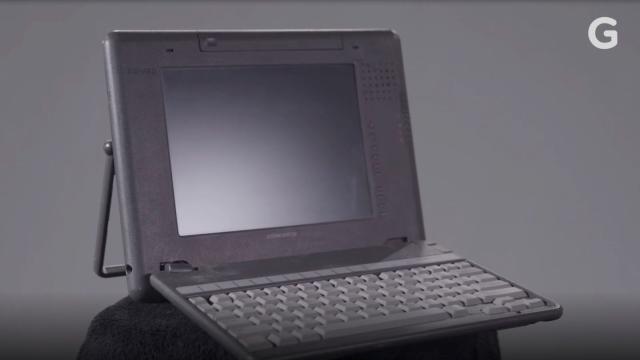In a recent barrage of new products, Microsoft, Apple, Google, Lenovo, and HP have all shown off computers that are trying to tackle one of the industry’s most vexing problems: How do you make a keyboarded computer that’s also a great tablet? How do you attach a keyboard to a tablet without ruining the whole thing? Every manufacturer is trying to create a device that can do it all.
Over the last few months, we’ve talked to top computer designers to get to the bottom of just why it’s so hard to design the tablet-laptop hybrid device we’ve taken to calling “the impossible laptop.” In the video above, we explore the history of these 2-1 devices and take a close look at some of the new products we’re really excited about going into the future.
Creating the perfect “2-in-1” device seems to defy engineering. The processor has to be fast enough to handle demanding multitasking while low-power enough to fit in a thin chassis. The device has to work perfectly both with your fingers on the display and your fingers on a touchpad and keyboard. And the hinge, the critical mechanism that allows the device to transition from laptop to tablet and back, needs to be just right.
Perhaps the earliest attempt at creating a 2-1 was the Compaq Concerto, which was released in 1993. The Concerto was one of the first PC-like devices to have both a keyboard and touch display. It had a big hinge-handle to prop up its large body, and an ugly 640×480 greyscale display. While the keyboard wasn’t terrible to type on, it also felt like an afterthought that had to be attached to the device by a bulky cable.
There are other earlier examples of tablet-like devices, but the Concerto was the first built with an understanding that people would want a keyboard when they got tired of pointing their way through all their computational tasks. It was also very unpopular, and Compaq discontinued it in 1994.
2-in-1s in the early 2000s were almost as silly as the Concerto. Big clunky laptops with even clunkier hinges inspired by the era’s mobile phones. There was nothing sleek or particularly engaging about them, and while the hinge worked, it took up way too much space.
In the early 2010s things rapidly changed. First, Apple introduced the iPad in 2010. It was the very first device that actually showcased what a touch-based computer could be. Early iPads were not great — they were slow, overly reliant on legacy apps ported from the iPhone, and you couldn’t do much with them besides watch movies or read books. But they were inspiring.
Then in 2011 Microsoft announced Windows 8, a new version of its operating system that had a touch-based user interface baked right in. Suddenly anyone making a Windows machine could make a device aping the iPad, giving people a tablet experience to go with their normal mouse and keyboard one.
These two things aren’t the only contributions to the creation of a new kind of computer — better capacitive touch screens helped too. Yet they’re what seemed to inspire laptop makers. By January of 2012, Lenovo had announced the Yoga 13, a 13-inch laptop that could turn into a tablet thanks to its 360-degree hinge.
Later that year, Microsoft announced the Surface for Windows 8 Pro. That tablet-like computer that would later be known as the Surface Pro., and they’re what led to the Microsoft Surface Pro in 2013 — the first real 2-in-1.
Since then we’ve seen many attempts at creating devices that move smoothly between tablet and laptop, but Lenovo and Microsoft really established the two primary design philosophies that would factor into the design of nearly every 2-in-1 that would come after. There’s the tablet-first design used by the Microsoft Surface, which relies on that crucial rear hinge to let the device turn into a decent sturdy approximation of a laptop.
And on the other side, you have Lenovo, which created a laptop-first device relying on laptop hinges with 360 degrees of motion. Lenovo’s hinge has, ultimately, been more popular. Created by the ThinkPad team, it was adopted by the Yoga line, but Lenovo failed to patent it. So every other laptop maker “borrowed” the design in creating their own laptop-first 2-in-1s.
For the most part, the products announced over the last month have hewed closely to one or the other design. With the exception of HP and Apple. Apple has stuck with the iPad. It’s a tablet, and if you squint and do some mental gymnastics you can call it a 2-in-1 — though the lack of mouse input and the crummy keyboard case make it a very poor one.
Apple, it seems, is eschewing the 2-in-1 concept altogether and leaning hard on just the one — the tablet.
HP is doing something different. It’s added a second hinge to allow its HP Spectre Folio to transition smoothly from laptop to a tablet that’s far thinner than laptop-first 2-in-1s usually are. It works so naturally that you find yourself surprised no one’s done it before. But it’s still a thick device that can’t match an actual tablet like the iPad for a tablet experience.
See what I mean — the 2-in-1 laptop really does seem impossible, doesn’t it?
